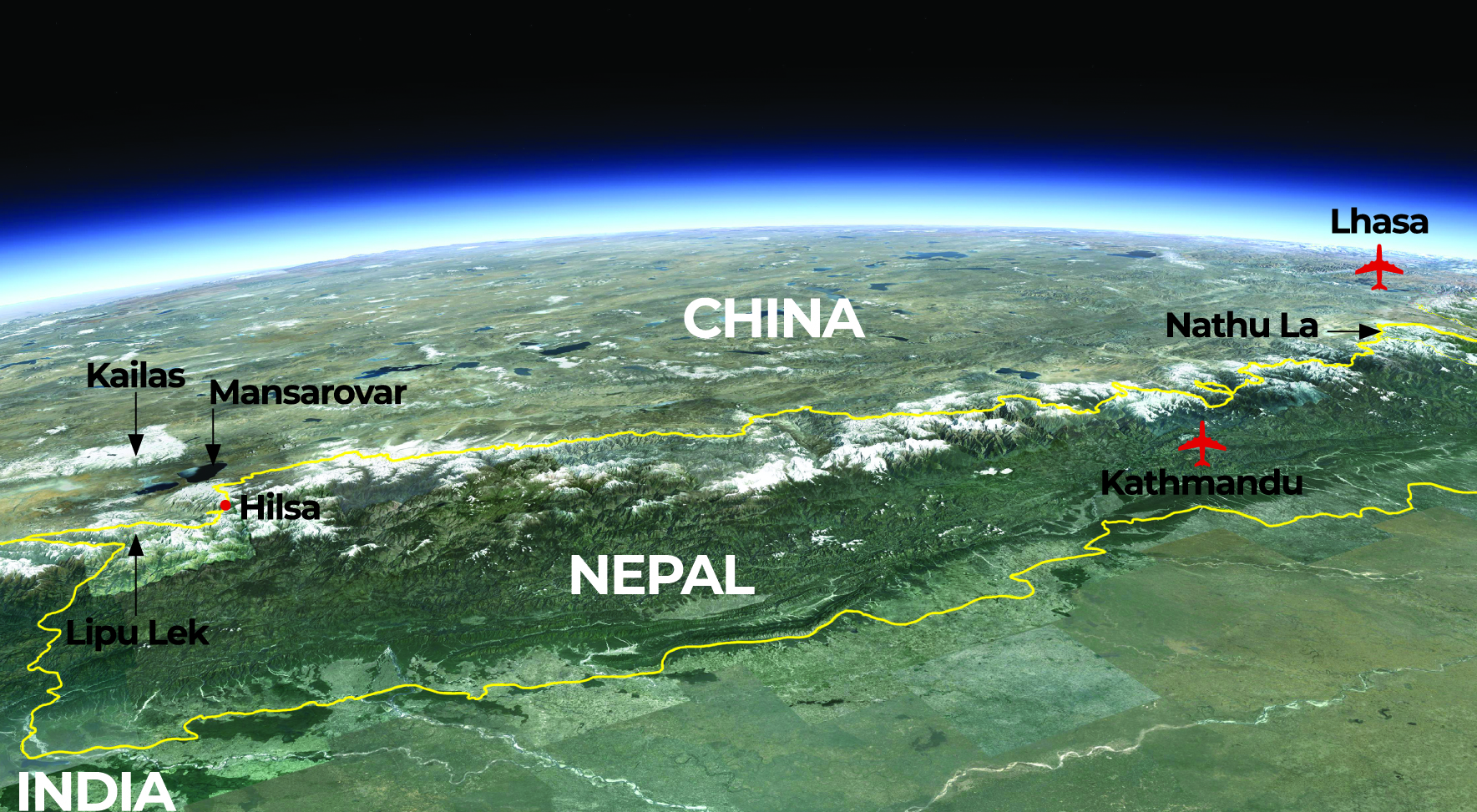The geopolitics of pilgrimage
China is reopening the Hilsa border to Mansarovar, Nepal must better manage the route for maximum advantageIn May 2020, India inaugurated a strategic link road connecting a disputed part of Nepal’s Kalapani region to Tibet via Lipu Lek Pass. This triggered protests in Nepal, and Parliament passed Nepal’s new map.
India has since fast tracked the project and is looking at completing the link road by 2024 allowing Indian pilgrims easier access to the holy Kailas-Mansarovar pilgrimage route, completely bypassing Nepal. Even so, the link through Hilsa is more convenient if Nepal can get its act together.
Nepal is one of the primary gateways for Indian tourists on the pilgrimage to Mansarovar Lake and Mt Kailas in Tibet. Until Covid ended the route, tens of thousands of Indian pilgrims transited Nepal to either fly to Lhasa, or fly to Hilsa. Each pilgrim paid anything between $2,500 to $3,500.
But even as China plans to reopen the Hilsa border post in Humla starting 1 May, there is an alternative: the Lapcha Bhanjyang. The Indian yogi Sadhguru in 2021 visited Limi-Lapcha in northern Humla two times with his followers to pay his respects to Kailash-Mansarovar, the only accessible point in Nepal from which the holy lake and mountain are visible.

It takes four days on foot to reach Limi-Lapcha valley from Simkot, the district headquarters of Humla. During the first leg of the trip, unofficial homestay services are available but after that pilgrims manage their own tents and food.
On top of the direct economic benefit to the travel companies, hotels, transport services and tour guide en route to Humla, the pilgrims also benefit the locals in Pashupati, Boudha, Swayambhu or Budhanilkantha which they visit in Kathmandu before departing for Kailas-Mansarovar.
But the biggest draw for the Nepal route is that, unlike Indian tour companies, their Nepali counterparts are exempt from the Indian quota system. Any number of pilgrims of any nationality can visit Mount Kailas and Lake Mansarovar through Nepal if they can acquire Chinese visas and permits.
By contrast, the agreement between the governments of India and China had stipulated that only 1,080 Indian pilgrims in 18 groups of 60 each could visit the sacred site in Tibet Autonomous Region through Lipu Lek every year before the road was built.
This was before 2015 when a new route to Tibet via the Nathu La in Sikkim was opened, making the journey significantly safer and more comfortable, although longer. The Lipulek route at 5,500m meant pilgrims had to trek at high altitude, cross over to the Chinese side to take buses to the circumambulation. When the border road is finished next year, things could be easier.


The new agreement to open the Nathu La pass allowed at first for 250 pilgrims in five groups of 50 each to visit Mount Kailas and Mansarovar, and then 500 people in 10 groups of 50 each soon after.
Many Indian pilgrims, however, say that they find it preferable to travel to the sacred site through Nepal. And if Nepal can improve roads and facilities, it could get much more of the pilgrim traffic.
Then the quota system set by the Chinese government means that there is a lucky draw and they must also pass the various health-related criteria at each stage of the selection. If a family wishes to visit Kailas-Mansarovar together, the chances of everyone passing and winning the lottery are slim. However, private companies operate the tour on Nepal and China sides for all pilgrim groups.


Nepal can use its geographical location and geopolitics with long historical and cultural relationships with both countries to its advantage. India and China have had border disputes for a long time, with violent skirmishes at the border. However, the two countries depend on each other for trade.
Nepal stands in a unique position to perform facilitative roles between the world’s two biggest economies. Connecting the followers of Hindu, Buddhist, Jain and Bön faiths to the spiritually sacred Mount Kailas and Lake Mansarovar is one such opportunity, which Nepal is yet to tap adequately.
The Department of Immigration in Kathmandu does not even keep a record of Indian pilgrims visiting Tibet through Nepal because ‘Kailas-Mansarovar does not fall within Nepali borders’ — even though these visitors were bringing in millions of dollars every year.
Nepal will not always have this advantage. After the Indian and Chinese governments signed an agreement in 2015 to develop trade and pilgrimage to Kailas-Mansarovar through Lipu Lek, the Indian authorities inaugurated a link road in the disputed region in May 2020. If China relaxes quota restrictions on Indian pilgrims, New Delhi may also impose restrictions on its citizens going via Nepal.
It is urgent that Nepal think how best it can reap economic and geopolitical benefits of the Hilsa route with better connectivity and facilities.
Nabraj Lama is a research scholar and his work focuses on geopolitics, indigenism, international affairs. [email protected]
Read also:
Remote corner of Nepal’s remotest district, Bharat Bandhu Thapa
Seti's gorgeous gorges, Hermann Warth
Trails less travelled, Joy Stephens
A survival strategy for Nepal, Kunda Dixit




